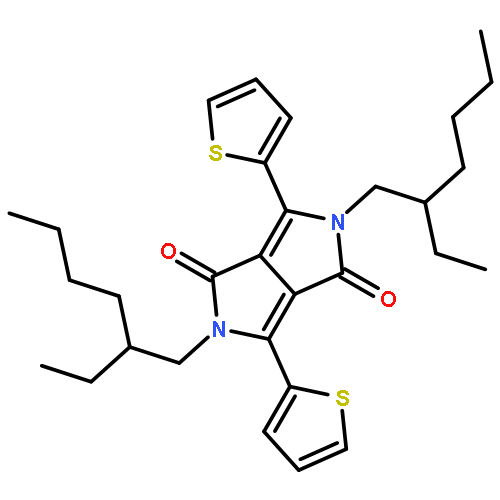Co-reporter: Shi-Yong Liu, Wen-Qing Liu, Jing-Qi Xu, Cong-Cheng Fan, Wei-Fei Fu, Jun Ling, Jun-Yong Wu, Min-Min Shi, Alex K.-Y. Jen, and Hong-Zheng Chen
pp: 6765
Publication Date(Web):April 10, 2014
DOI: 10.1021/am500522x
In this report, an atom efficient and facile synthetic strategy for accessing multi-diketopyrrolopyrrole (DPP)-based oligomers used in solution-processed organic field effect transistors (OFETs) and organic solar cells (OSCs) has been developed. The DPP units were successfully installed onto benzene and pyrene cores via palladium-catalyzed dehydrohalogenative coupling of mono-capped DPPs with multi-bromo-benzene or -pyrene (direct arylation), affording four oligomer small molecules (SMs 1–4) containing bis-, tri-, tri-, and tetra-DPP, respectively, in high yields of 78–96%. All the designed linear or branched DPP-based oligomers exhibit broad light absorptions, narrow band-gaps (1.60–1.73 eV), deep highest occupied molecular orbital (HOMO) levels (−5.26 ∼ −5.18 eV), and good thermal stability (Td = 390–401 °C). OFETs based on SMs 1–4 showed hole mobilities of 0.0033, 0.0056, 0.0005, and 0.0026 cm2 V–1 s–1, respectively. OSCs based on SMs 1–4 under one sun achieved power conversion efficiencies of 3.00%, 3.71%, 2.47%, and 1.86% accordingly, along with high open-circuit voltages of 0.86–0.94 V. For OSC devices of SM 1, SM 3, and SM 4, the solvent CHCl3 was solely employed to the formation of active layers; neither high boiling point additives nor annealing post-treatment was needed. Such a simple process benefits the large-scale production of OSCs via roll to roll technology.Keywords: diketopyrrolopyrrole; direct arylation; organic field effect transistors; organic solar cells; pyrene; solution-processed small molecules;
